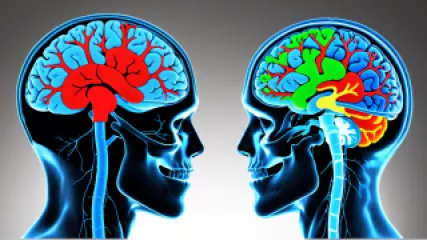Exploring the Science Behind Bipolar Disorder: A Research Summary
Exploring the Science Behind Bipolar Disorder: A Research Summary
Bipolar disorder, a complex and multifaceted mental health condition, has long captivated the attention of researchers, clinicians, and those affected by it. This comprehensive research summary delves into the intricate mechanisms underlying this disorder, exploring the latest scientific advancements and insights that have transformed our understanding of this enigmatic condition.
Understanding the Bipolar Spectrum
Bipolar disorder is characterized by a spectrum of mood states, ranging from the euphoric highs of mania to the debilitating lows of depression. This dynamic interplay of emotional extremes has long been a source of intrigue and clinical exploration. At its core, bipolar disorder is a chronic, recurrent mental illness that affects an individual's mood, energy levels, and cognitive functioning.
The modern conceptualization of bipolar disorder encompasses a range of subtypes, including bipolar I, bipolar II, and cyclothymic disorder, each with its own unique presentation and clinical implications. This spectrum approach has enabled a more nuanced understanding of the diverse manifestations of the disorder, allowing for more targeted and personalized treatment strategies.
The Neurobiology of Bipolar Disorder
Researchers have made significant strides in unraveling the complex neurobiological mechanisms underlying bipolar disorder. Through advanced neuroimaging techniques, genetic studies, and cutting-edge molecular research, a multifaceted picture of the disorder's neurological underpinnings has emerged.
Structural and Functional Brain Alterations
Neuroimaging studies have revealed distinct structural and functional brain abnormalities associated with bipolar disorder. Volumetric analyses have identified reduced gray matter in brain regions involved in emotion regulation, such as the prefrontal cortex, amygdala, and hippocampus. These structural changes are often accompanied by altered functional connectivity within and between these key brain networks, contributing to the dysregulation of mood and cognitive processes.
Moreover, studies have highlighted the role of neuroplasticity, or the brain's ability to adapt and change over time, in the manifestation of bipolar disorder. Altered patterns of neuronal connectivity and synaptic function have been linked to the cyclical nature of the disorder, potentially explaining the fluctuations in mood and cognitive abilities experienced by individuals with bipolar disorder.
Neurotransmitter Imbalances
The dysregulation of various neurotransmitter systems has long been implicated in the pathogenesis of bipolar disorder. Extensive research has focused on the role of monoamines, such as serotonin, dopamine, and norepinephrine, in the modulation of mood and cognition.
Disruptions in the delicate balance of these neurotransmitters have been observed in individuals with bipolar disorder. For example, elevated dopamine levels during manic episodes and reduced serotonin levels during depressive episodes have been reported. These imbalances can have far-reaching consequences, affecting the brain's reward systems, emotional processing, and executive functioning.
Circadian Rhythm Disruptions
Emerging evidence suggests that disruptions in the body's internal circadian rhythms may play a pivotal role in the development and course of bipolar disorder. The circadian system, which regulates the 24-hour sleep-wake cycle and other physiological processes, is intimately linked to mood regulation.
Individuals with bipolar disorder often exhibit disturbances in their circadian rhythms, such as altered sleep-wake patterns, fluctuations in melatonin secretion, and dysregulation of the hypothalamic-pituitary-adrenal (HPA) axis. These circadian disruptions may contribute to the cyclic nature of the disorder, potentially triggering or exacerbating mood episodes.
Genetic and Environmental Factors
Bipolar disorder is widely recognized as a multifactorial disorder, with a complex interplay of genetic and environmental factors contributing to its development and manifestation.
Genetic Influences
Twin and family studies have consistently demonstrated a strong genetic component in bipolar disorder. Individuals with a first-degree relative with the disorder have a significantly higher risk of developing the condition themselves, underscoring the heritable nature of the illness.
Genome-wide association studies (GWAS) have identified numerous genetic variants and loci associated with an increased susceptibility to bipolar disorder. These findings have shed light on the complex polygenic architecture of the disorder, involving the collective contribution of multiple genes and genetic pathways.
Additionally, research has explored the role of epigenetic mechanisms, such as DNA methylation and histone modifications, in modulating gene expression and potentially contributing to the development and course of bipolar disorder. These epigenetic factors may interact with environmental influences, further shaping the individual's vulnerability to the disorder.
Environmental Influences
While the genetic underpinnings of bipolar disorder are well-established, environmental factors also play a crucial role in the onset and progression of the disorder. Stressful life events, trauma, and other environmental stressors have been identified as potential triggers for mood episodes in individuals with a genetic predisposition to bipolar disorder.
Furthermore, factors such as disruptions in sleep patterns, substance abuse, and social and occupational functioning can exacerbate the course of the disorder and contribute to the development of comorbid conditions, such as anxiety disorders and substance use disorders.
Towards Personalized Treatment Approaches
The integration of the latest scientific insights into the pathophysiology of bipolar disorder has paved the way for more personalized and targeted treatment approaches. Clinicians and researchers are now better equipped to develop individualized intervention strategies that address the unique needs and characteristics of each patient.
Pharmacological Interventions
Pharmacotherapy remains the cornerstone of bipolar disorder treatment, with a range of medications, including mood stabilizers, antipsychotics, and antidepressants, playing a pivotal role in managing the disorder's symptoms and preventing relapse.
Advancements in our understanding of the neurobiology of bipolar disorder have led to the development of novel pharmacological agents that target specific neurobiological pathways. These targeted therapies aim to address the underlying mechanisms of the disorder, potentially offering more effective and personalized treatment options.
Furthermore, the incorporation of pharmacogenomic approaches, which consider an individual's genetic profile in medication selection and dosing, has the potential to enhance treatment efficacy and minimize the risk of adverse effects.
Psychosocial Interventions
Alongside pharmacological interventions, the integration of psychosocial approaches has become an integral part of the comprehensive management of bipolar disorder. Cognitive-behavioral therapy (CBT), interpersonal and social rhythm therapy (IPSRT), and family-focused therapy have all demonstrated efficacy in improving symptom management, promoting social and occupational functioning, and enhancing overall quality of life for individuals with bipolar disorder.
These psychosocial interventions aim to address the multifaceted challenges associated with bipolar disorder, including emotion regulation, lifestyle management, and the impact of the disorder on interpersonal relationships. By incorporating these evidence-based psychosocial approaches, clinicians can provide a holistic and personalized treatment plan that caters to the unique needs of each patient.
Emerging Frontiers in Bipolar Disorder Research
As our understanding of bipolar disorder continues to evolve, researchers are exploring new frontiers that hold the promise of revolutionizing the way we approach this complex mental health condition.
Neuroimaging and Biomarker Development
Advancements in neuroimaging techniques, such as functional magnetic resonance imaging (fMRI) and positron emission tomography (PET), have enabled researchers to delve deeper into the neurobiological underpinnings of bipolar disorder. By identifying specific patterns of brain activity and connectivity associated with the disorder, these imaging modalities hold the potential to serve as diagnostic and prognostic biomarkers, aiding in earlier detection and more accurate monitoring of the disorder's course.
Furthermore, the search for reliable biological markers, or "biomarkers," remains an active area of research in the field of bipolar disorder. The discovery of specific genetic, molecular, or neurochemical signatures associated with the disorder could lead to the development of more objective diagnostic tools and the tailoring of treatment strategies to the individual patient's needs.
Novel Therapeutic Approaches
Researchers are exploring innovative therapeutic avenues beyond traditional pharmacological and psychosocial interventions. These emerging approaches include the use of neuromodulation techniques, such as transcranial magnetic stimulation (TMS) and deep brain stimulation (DBS), which aim to directly target and modulate the neural circuits implicated in bipolar disorder.
Additionally, the potential of novel pharmacological agents, such as ketamine and its derivatives, has garnered significant attention. These fast-acting antidepressants have shown promise in alleviating the symptoms of bipolar depression, potentially offering new options for individuals who have not responded to conventional treatments.
The Role of Technology and Digital Interventions
The digital age has ushered in new opportunities for the management of bipolar disorder. The integration of technology-based tools, such as mobile applications, wearable devices, and telemedicine platforms, has the potential to enhance patient engagement, improve symptom monitoring, and facilitate personalized care.
These digital interventions can provide real-time data on mood, sleep, activity patterns, and other relevant parameters, enabling clinicians to make more informed treatment decisions and allowing patients to take a more active role in managing their condition. Additionally, the accessibility and scalability of these digital tools hold promise for expanding the reach of bipolar disorder treatment, particularly in underserved or remote communities.
Conclusion: Navigating the Complexities of Bipolar Disorder
Bipolar disorder, with its intricate neurobiological underpinnings and multifaceted clinical presentation, remains a complex and challenging mental health condition. However, the steady accumulation of scientific knowledge, driven by cutting-edge research and technological advancements, has significantly enhanced our understanding of this disorder.
As we continue to explore the intricacies of bipolar disorder, from the neurological mechanisms to the genetic and environmental factors at play, we are poised to develop more personalized and effective treatment approaches. By integrating the latest research findings into clinical practice, healthcare professionals can provide tailored interventions that address the unique needs of each individual living with bipolar disorder.
The journey towards comprehensive and empathetic care for individuals with bipolar disorder is an ongoing one, but the scientific progress made in recent years has instilled hope and optimism. Through collaborative efforts among researchers, clinicians, and the bipolar disorder community, we can continue to push the boundaries of our understanding and improve the lives of those affected by this complex and multifaceted condition.
About the Author
Winfred Snyder is a clinical psychologist with over 15 years of experience in the field of bipolar disorder research and treatment. He has published numerous peer-reviewed articles and book chapters on the topic and has been invited to speak at various national and international conferences. Winfred is passionate about advancing the scientific understanding of bipolar disorder and translating research findings into more effective and personalized treatment approaches.






